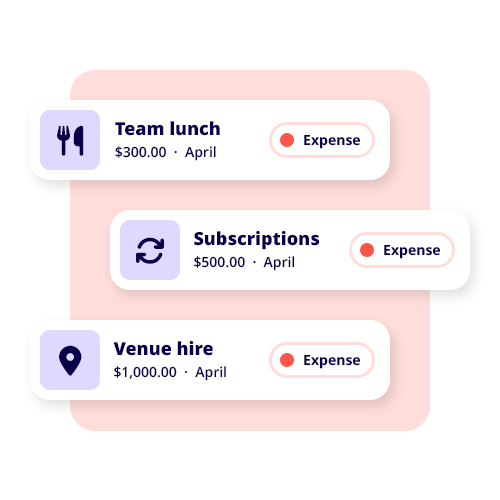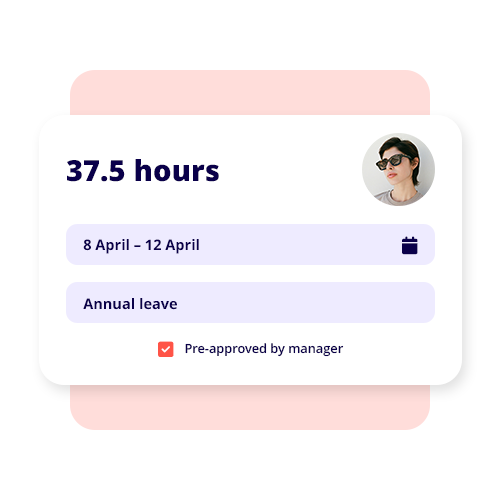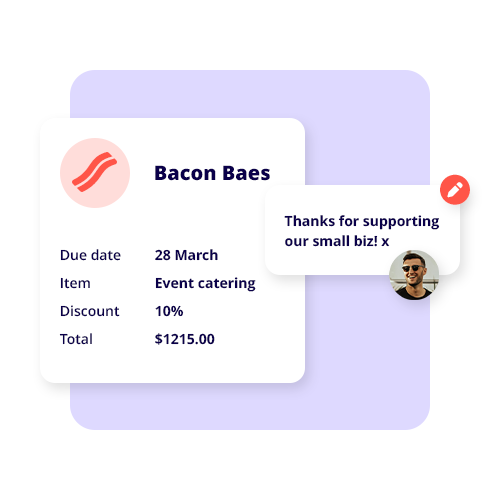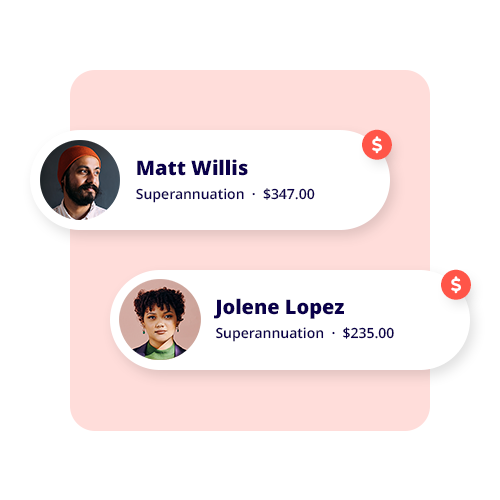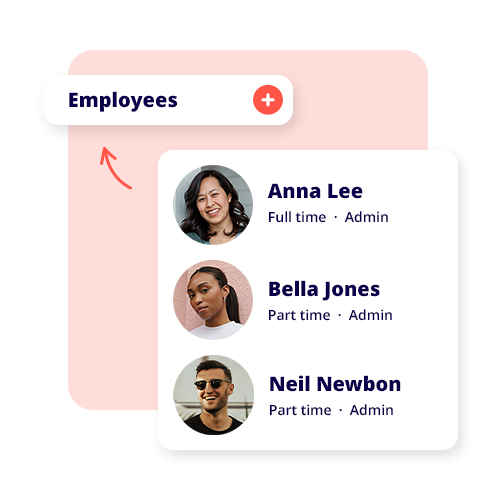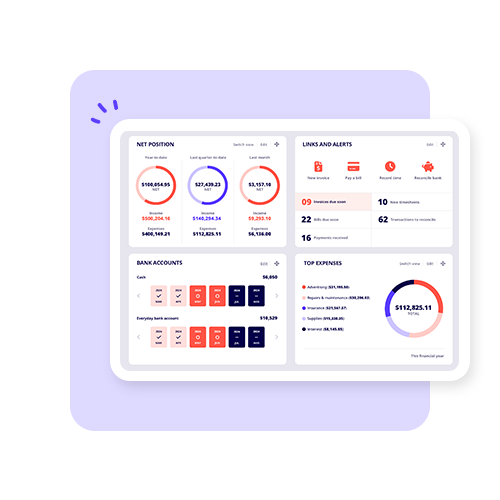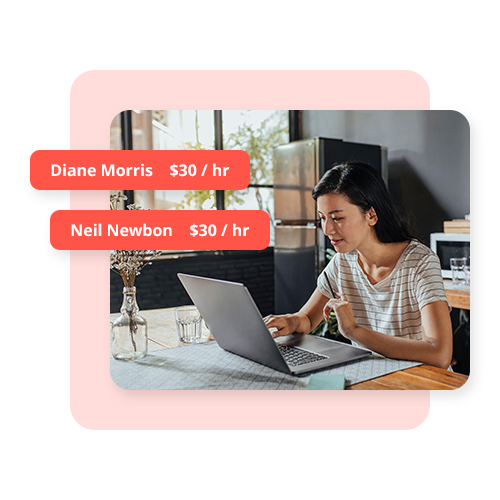Gender Imbalance in Small Business
We analysed ABS data and surveyed 1,000 Australian small business owners to discover how many small businesses are run by women, the industries they operate in, their earnings, and the challenges they encounter.


Gender pay gap and gender inequality in small business
Key takeaways
How many women are starting a business in Australia?
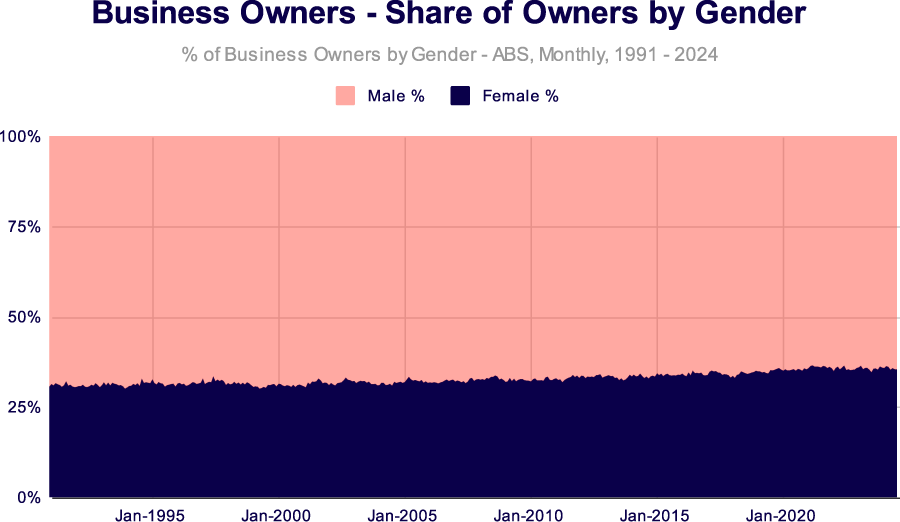
Industries where women are starting businesses
In contrast, industries like Electricity, Gas, Water, and Waste Services are exclusively male-owned, with Construction close behind at 89.5%. A higher proportion of male business owners also have studied similar subjects in STEM, such as Engineering and Related Technologies (94.5%), Architecture and Building (90.8%) and Information Technology (77.9%).
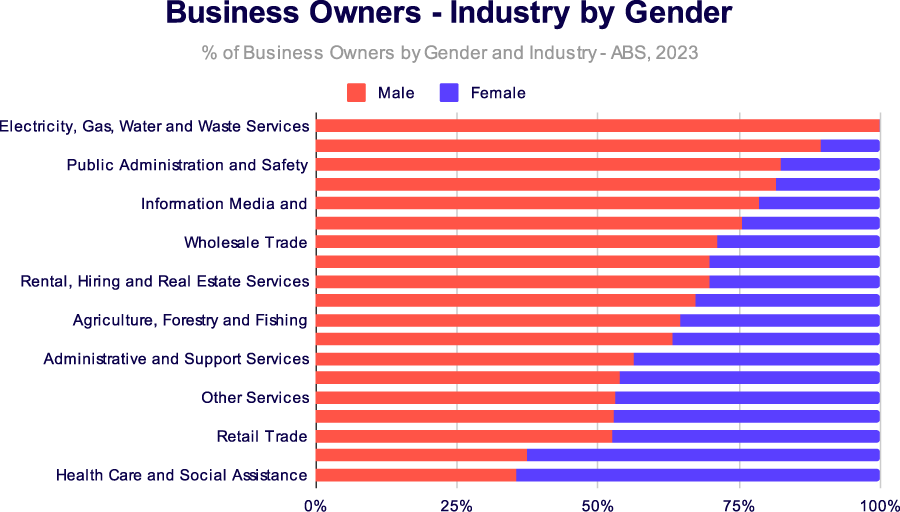
The characteristics of male and female business owners
In regards to education, male business owners tend to have qualifications like a certificate III or IV or an advanced diploma, with 39.1% falling into this category. Meanwhile, two in five (40.1%) female business owners hold at least a bachelor’s degree, graduate diploma, or postgraduate degree. This higher level of education among women may be due to a belief that they need formal qualifications and skills development before entering the entrepreneurial landscape.
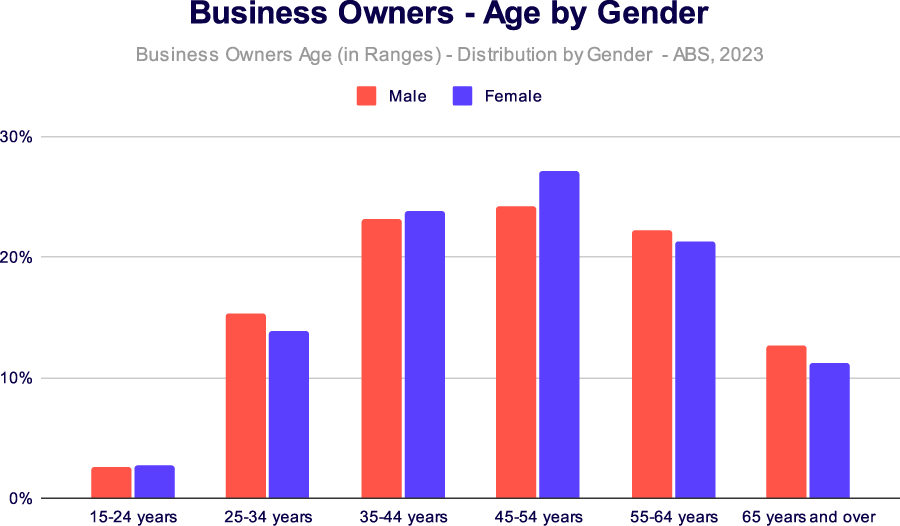
The gender pay gap among small business owners
For those who did pay themselves, men had a median salary nearly 1.5 times higher than that of women, at $59,500 compared to $40,000 per year. The average salary also showed a significant difference, with men earning $89,759 on average, while women earned $48,729.
The survey results were backed by ABS data that showed 37.4% of all female business owners do not take a wage or salary, compared to 30.7% of men.
Looking at all small business owners, including those who didn’t pay themselves a salary, the average take-home earning as a percentage of revenue reported by female business owners was 46%, five percentage points lower than their male counterparts (51%).
Among those who reported owning a “side hustle,” the results were similar, with women earning only 40% of what men made. Women had a median annual income of $4,000 from their side hustles, while men earned $10,000.
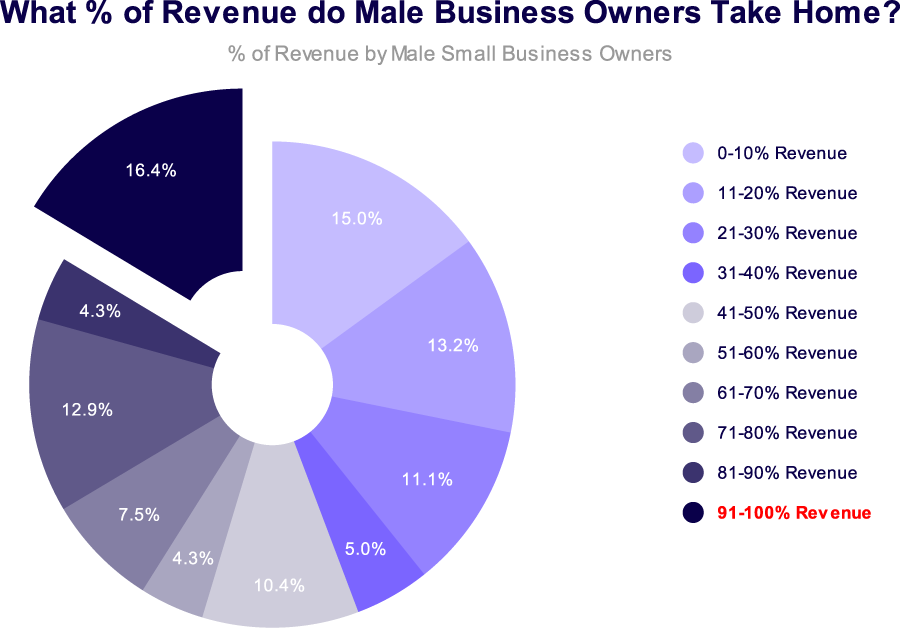

The differences in difficulties faced when starting a small business
The greatest disparity between women and men when it comes to difficulties starting and running a small business was ‘Imposter Syndrome’, with 16.4% of women reporting this experience, compared to only 5.8% of men.
When small business and side hustle owners were asked if they felt taken seriously by stakeholders when starting their ventures, only half (50.6%) of women reported feeling respected. In comparison, a higher percentage of men (57.9%) felt this way, though the difference was relatively small.
Despite men and women facing similar difficulties at similar rates, more than half (54.6%) of women who own small businesses believe that men have it easier when starting and running a business or side hustle, compared to just one-third (36.5%) of men.
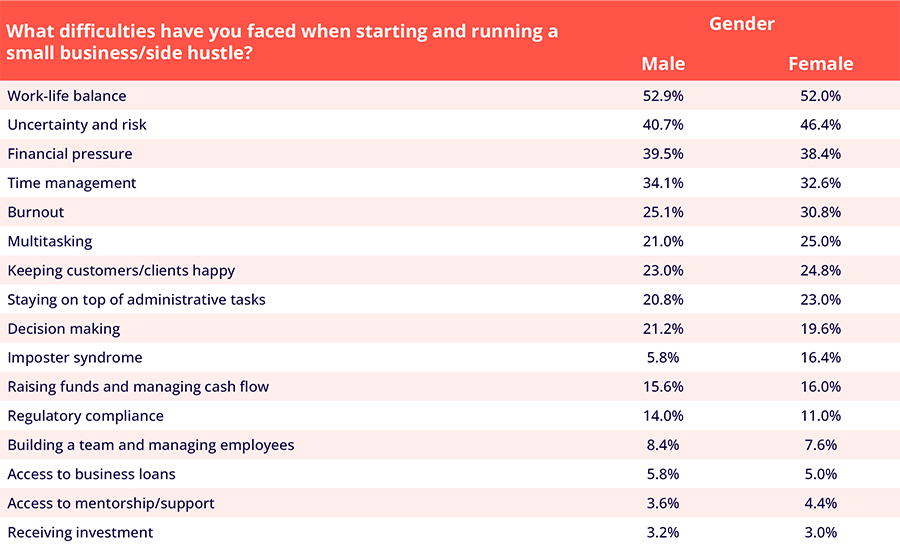
The differences in hours worked by male and female small business owners
Women who run a side hustle also work fewer hours than men. Over half (50.7%) of side hustlers surveyed spent less than 10 hours a week on their side hustle compared to 39.7% of men.
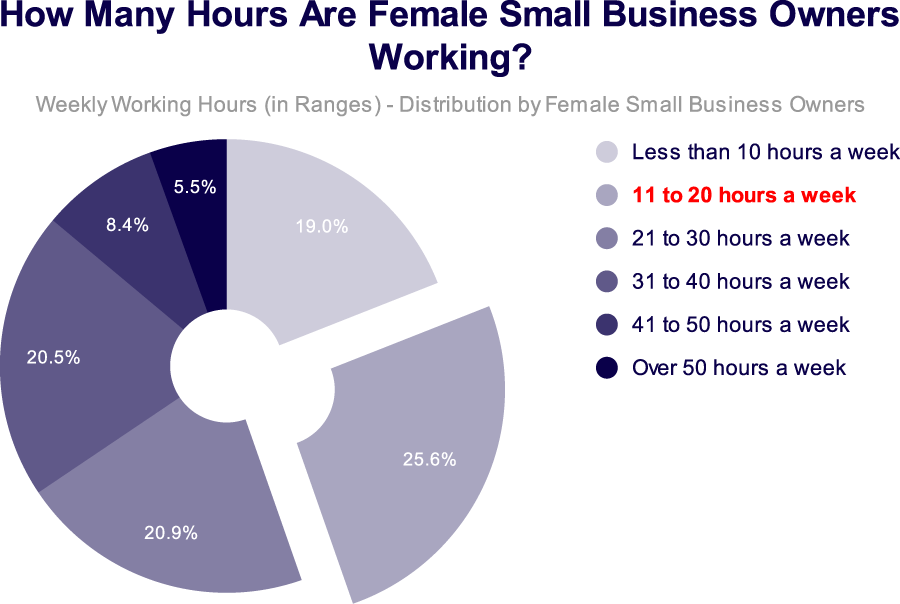
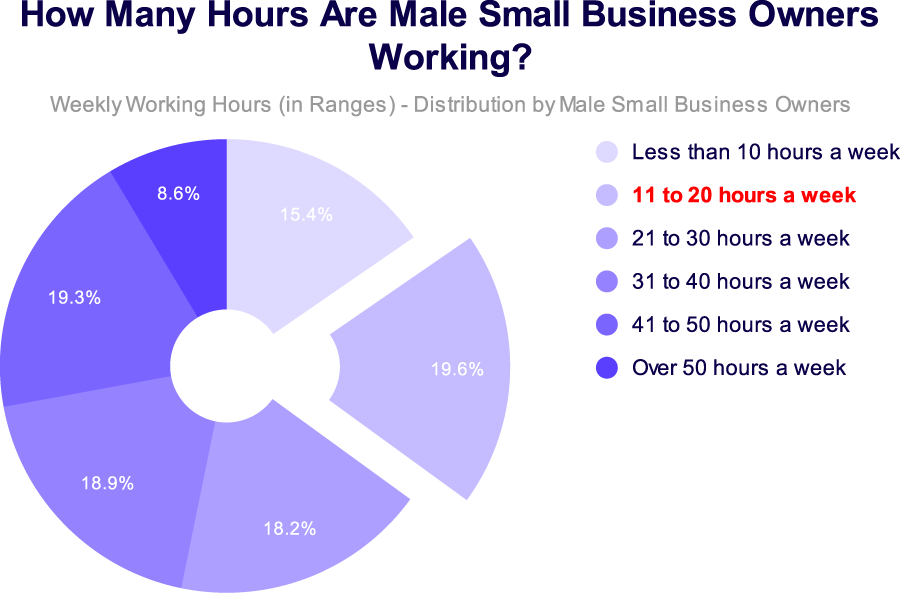
The differences in interpreted small business success levels between men and women
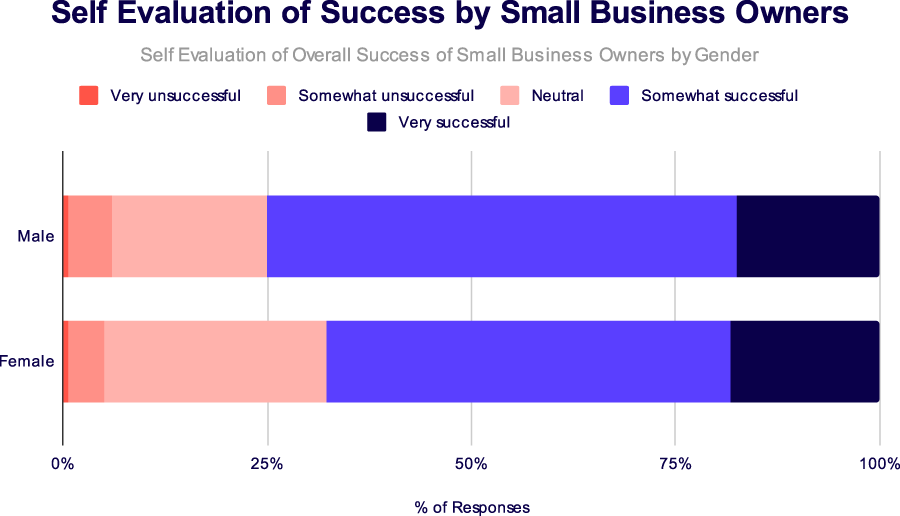
Why do women start their own business?
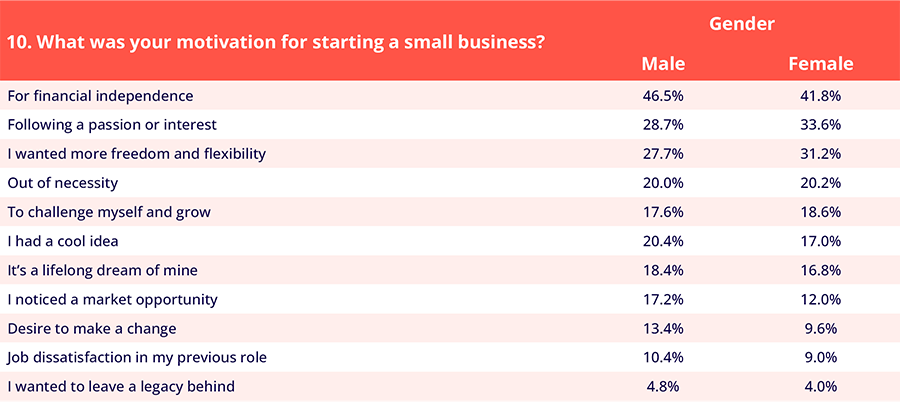
This highlights the need to support and empower female entrepreneurs. We need to create an environment that encourages female entrepreneurs to know their worth, as well as navigate challenges such as imposter syndrome and financial difficulties.”
– Jessica Morris, Head of People and Culture at Reckon
ABOUT THE DATA
For the purposes of this report, we have used the ABS definition of small business, which is that of non-employing and employing businesses with less than 20 employees.
The term “gender” used in this report is tied to the ABS definition of “sex” to determine sex characteristics, such as their chromosomes, hormones and reproductive organs, for their use in data collection and output.
There are instances data is used relating to all business owners, regardless of business size, as it has not been made available at the granularity identifying small-business owners specifically. These statistics have been utilised as 97.5% of all Australian businesses are small businesses (ABS Counts of Australian Businesses 2024), as such, the data can be considered a reasonable approximation for ownership/management of small business.
When analysing ABS data, Status in Employment (SIEMP) was used for owner manager classification to define business owners. Business owners included both unincorporated and incorporated enterprises, as well as both with and without employees. For the purposes of this study, data for owner managers was used only when listed as status of their main job.
The survey was conducted in October 2024, in line with the nationally representative percentage targets for age, gender and location. It consisted of 10 questions to understand the differences between those who own small businesses and/or have side hustles, particularly in relation to gender including their personal income and workload, as well as difficulties, motivations and successes in starting and running a business.
Please note that some numbers and percentages may not sum due to rounding.

Download the full report
Survey reveals the gap between male and female small business owners.
"*" indicates required fields

Katy Walker, The Clearing Room
set-up reckon one
Accounting software made for every small business
Spend less time managing your finances and more time growing your business.
Related articles

7 step guide on how to start a business in Australia
Read more >

Business development plan
Read more >

Stages of business growth
Read more >







